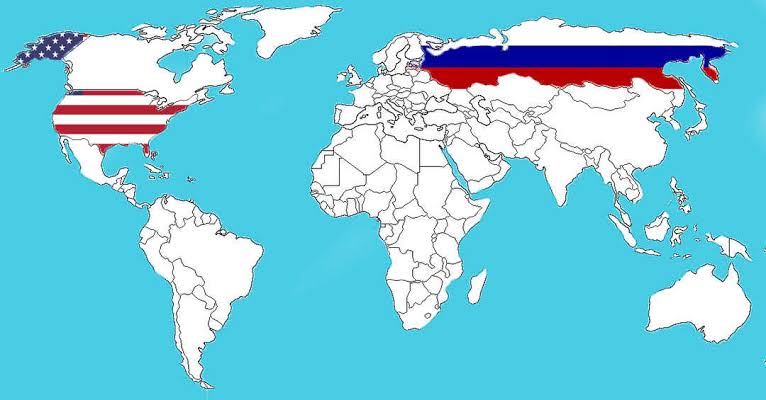“Baker Shot”, part of Operation Crossroads nuclear test by the United States at Bikini Atoll in 1946. Public Domain.
In the eighty years since of the atomic bombings of Japan dozens of opportunities to halt the macabre march of nuclear weapons development have been wasted. Starting with the mistaken U.S. decision to drop the first fission bombs on targets of “no military value”, Hiroshima and Nagasaki, the allure of guaranteeing “national security” through nuclear arms has thwarted many arms control initiatives.
While Japan’s military was prepared to fight an endless guerrilla war against American occupation, even after the A-bombings, it was also prepared to surrender before, conditioned on the safety of its Emperor Hirohito and preserving a vestige of the Chrysanthemum Throne. Japan’s military occupation of vast swaths of China, Mongolia and Southeast Asia, ended with a single radio announcement from Emperor Hirohito for his soldiers to stand down.
Opponents of dropping A-bombs on Hiroshima and Nagasaki, both in the Truman Cabinet and at Los Alamos NM where the bombs were designed and manufactured, were over-ruled: The U.S. would gain a singular nuclear monopoly, armed with the most powerful weapons imaginable. The U.S. had spent such vast sums on the Manhattan Project building the plutonium and uranium weapons, not to use them was impolitic. The U.S. wanted to forestall a planned Soviet invasion of northern Japan. The American public was war weary and ready “for the boys to come home”. A sudden conclusion of the war with Japan was required.
Hiroshima and Nagasaki were targeted precisely because they had not been bombed in conventional air raids like the fire- bombing of Tokyo. Hiroshima had been “reserved” for nuclear attack, the hilly geography surrounding the city would magnify the explosion. Casualties would be largely civilians precisely and purposefully to “shock” Japan into submission, ending the war immediately.
Four of President Truman’s Joint Chiefs of Staff, including Dwight Eisenhower and Douglas MacArthur advised against the A-bombing of Hiroshima and Nagasaki. Chief of Staff Admiral William Leahy warned against using atomic weapons as they were “immoral” and “our enemies will eventually use them against us in reciprocal fashion”.
That U.S. nuclear monopoly lasted only four years, until the Soviets exploded their own nuclear device in 1949. The two billion dollars expended on the Manhattan Project have been eclipsed by trillions of dollars spent on expanding the U.S. nuclear arsenal ever since. Our “national security” has decreases as nuclear weapons stockpiles and the number of nuclear armed countries have increased.
The United Nations was founded in October 1945 to foster peace, human rights, and eliminate nuclear weapons. The First Committee of the UN formed to eliminate nuclear weapons. The UN Atomic Energy Commission was created to share civil nuclear technology and control nuclear materiel. Within a few years UNAEC disbanded. The U.S., with seven nuclear weapons, and the Soviets, with no nuclear weapons, would not agree when the UNAEC would come into force, before the U.S. destroyed its nascent nuclear weapons stockpile, or after. A date that never to arrived.
The Cold War began, the unchecked nuclear weapons race culminated in 1986 with the U.S. and U.S.S.R. amassing 70,000 nuclear weapons. Over 2,000 nuclear tests were detonated in the atmosphere and underground, spreading radiation around the Earth. Exorbitant appropriations were devoted to nuclear weapons research and manufacture. Nuclear test sites will remain radiated waste lands forever.
Presiding over the Cold War nuclear arms build-up, President Eisenhower still attempted some arms control initiatives. In his 1953 Atoms for Peace speech, he proposed the International Atomic Energy Agency, that is active today. Eisenhower proffered limits on both atmospheric and underground nuclear weapons testing. Soviet leaders objected to proposed onsite inspections, and the American military, industrial and scientific community warned such a testing ban would threaten U.S. security and weaken its international credibility.
Ratification of a partial test ban treaty limited to atmospheric testing succeeded only late in President Kennedy’s term by an 80 to 14 ratification vote in the Senate. A total ban on nuclear weapons testing, both atmospheric and underground, proposed in 1996 and ratified by 177 countries, has eluded passage in the U.S. Senate ever since and is not in force.
A CTBT ratification vote by the Senate was decisively defeated in 1999, mostly along party lines, 51-48 (66 votes needed for ratification) handing President Clinton a stinging rebuke and weakening U.S. nuclear arms control arms control leadership. While many nuclear-armed countries would have followed the U.S. in ratifying the CTBT, failure to do so damaged the international influence of the U.S. and cast doubt on its commitment to nuclear arms control. A de facto moratorium on explosive nuclear weapons testing has held nonetheless for more than thirty years.
The prescient warning about the CTBT by President Eisenhower is sharper today than seventy years ago:
The failure to achieve a ban on nuclear testing, would have to be classed as the greatest disappointment of any administration — of any decade — of any time and of any party….
Similar augury could apply to other nuclear weapons control efforts. The Nuclear Non-Proliferation Treaty, NPT, came into force in 1970 was signed by 190 countries and is reviewed every five years. The next review is in 2026. The past three reviews (over 15 years) have failed to issue a consensus document. The frustration of non-nuclear armed states with the lack of nuclear weapons reductions by the nuclear-armed states, as required under Article VI of the Treaty, is growing contentious as international tensions increase.
The Strategic Arms Limitation Talks, SALT I of 1970, was the first bilateral treaty between the USSR and the US to limit the number of offensive intercontinental ballistic missiles. It capped the number of ground-launched and submarine-launched missiles to 2,400 each and the number of anti-ballistic interceptors.
With the invention of multiple independently targeted re-entry vehicles, MIRVs, loading as many as a dozen nuclear warheads on a single ICBM, each more powerful than the Hiroshima bombings, the limit on the number of Soviet and American missile launchers became paramount. In SALT II President Ford and Secretary Brezhnev agreed to a suite of arms control and verification measures that Brezhnev and President Carter signed in 1979. Roiled by the Soviets’ invasion of Afghanistan, the U.S. refused to ratify SALT II, and Carter withdrew it from consideration. Though his successor, Ronald Reagan, had campaigned against SALT II he adhered to it until it expired in 1985.
The Anti-Ballistic Missile Treaty, ABM, comprised one-half of the SALT I and II treaties. It limited each country to two protected areas and 200 interceptors each. ABM technology is extremely expensive, and can be overwhelmed by offensive technologies like MIRVs and decoys. The age-old adage that “offense beats defense still pertains. Military theorists assert that missile defense reduces “deterrence”, or “mutually assured destruction”, the founding principles of strategic security. An ABM system might encourage an enemy’s nuclear first strike.
Yet the ABM Treaty had proved successful since its ratification in 1972, until President George W. Bush withdrew from the treaty in 2002; the first time in modern history that an American president has withdrawn from a major international arms treaty. Though not the last.
After riding horses with “my friend” Vladimir Putin at the Bush ranch in Crawford TX. in the spring of 2002 Bush opined that diplomatic relations between the two countries had improved to an extent that they could further reduce their deployed nuclear arsenals to 1,700. Bush also felt confident enough in Putin’s friendship that he could announce the U.S. withdrawal from the ABM.
American diplomats immediately called Bush’s decision to abrogate the ABM treaty “a very bad mistake” William Perry, “a fatal blow to bilateral arms control,” John Rhinelander, and “the end of the nuclear arms control framework,” Jeffrey Sachs. An even more emphatic Putin, upon returning to Moscow, responded, “The ABM treaty is the cornerstone of world security. “And Bush’s withdrawal from the ABM treaty was an erroneous one.” Putin ordered the immediate development of a new “super missile” and ramped up ICBM production.
Ballistic missile defense (BMD) has always been controversial due to its extreme expense, inability to stop a full-scale ICBM attack, and its potential to skew the “deterrence” theory of the nuclear weapons stalemate. Regardless, BMD recurs in presidential security plans, from Bush’s installing anti-missile defenses in Poland and Czechoslovakia to Reagan’s Strategic Defense Initiative (SDI, aka “Star Wars”). SDI cost more than one trillion dollars and produced nothing, but whose greatest expense was the opportunity cost; Soviet President Gorbachev offered to eliminate all nuclear weapons if Reagan would adhere to the ABM treaty and scuttle SDI, Star Wars. The greatest arms control deal ever squandered.
The current gold-plated iteration of ballistic missile defense is Trump’s second term “The Golden Dome” missile shield. Plans being drawn by Lockheed Martin and Booz Allen envision a 2,000-satellite system that would intercept enemy ICBMs in the first “boost phase.” The physics of the plan are improbable, and the cost is incalculable.
The Intermediate-Range Nuclear Forces Treaty, INF, of 1987 successfully removed short and medium-range missiles from virtually all of Europe. All Soviet and western block missiles with ranges from 500 to 5,500 km. were removed or destroyed. The treaty was ratified by the Senate 93-5. Over 2,600 nuclear-capable missiles had been destroyed by the time Trump withdrew from the treaty, citing cheating by Russia, ignoring the dispute resolution clause in the treaty.
The Joint Comprehensive Plan of Action, JPCOA, The Iran Nuclear Deal of 2015, between the five permanent members of the UN Security Council, the European Union, and Iran, severely limited Iran’s generation and stockpiling of enriched uranium to concentrations below weapons grade in exchange for sanctions relief. Intrusive inspections of nuclear reactor sites in Iran by the IAEA determined Iran had adhered to the treaty. Regardless, Trump unilaterally withdrew the U.S. from the JPCOA in 2018. Sanctions were never lifted as described by the treaty. Since 2018, Iran has exceeded the quantity and concentration of its enriched uranium stockpile and banned IAEA inspectors from its reactor sites. Last week, Trump threatened to “bomb Iran” if it did not agree to his terms for a new nuclear deal. As of last Sunday, Iran had rebuffed Trump’s threat.
NewSTART, 2011, was ratified by the Senate 77-26 and remains the only treaty in force between the U.S. and Russia limiting the number of deployed nuclear weapons on each side: 700 deployed ICBM’s, 1,500 deployed nuclear warheads, and 800 launchers). Importantly, NewSTART devised an aggressive verification system, where each side inspects the other’s ICBM installations. Rigorous reporting protocols for identifying, numbering, and locating each ICBM covered under the treaty are in place. Such intrusive inspections were anathema in all previous arms control negotiations. NewSTART expires in February 2026. Without extending it, the U.S. and Russia will have no restraint on the expansion of their nuclear arsenals.
Limiting or eliminating nuclear weapons had been proposed even before the 1945 A-bombings of Japan. Fear, political ambition and or avarice have wrecked decades of arms control opportunities since. Some agreements have reduced the world’s nuclear weapons stockpiles from over 70,000 weapons in 1986 to 12,000 nuclear warheads today.
The U.S. has both led and betrayed the worldwide arms control agenda. Having abrogated a number of nuclear treaties, it is incumbent on the U.S. to salvage the NewSTART treaty within the year. Being the only country to have bombed another country with nuclear weapons the U.S. should ratify the Comprehensive Test Ban Treaty. It should reaffirm its responsibility under Article VI of the Non-Proliferation to reduce its nuclear stockpile. The profligate “modernization” of the U.S. strategic defense program, the SENTINEL ICBM project and the plutonium pit bomb production of new nuclear warheads should be reviewed and stopped
As so many have said for so many years in so many ways, “Escalating the nuclear weapons race is the insane road to follow.” “Eliminate nuclear weapons or they will eliminate us.”
© Counter Punch









